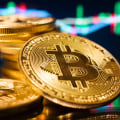While there are limits on how much you can buy at a Bitcoin ATM per day, you are allowed to buy as many Bitcoins as you want. There is no legal limit to the amount of Bitcoin you can purchase. The only practical consideration is that you can't buy more Bitcoin than is currently available. Adam Hayes, PhD, D., an expert in derivatives trading, behavioral economics, and finance, has extensive experience in this area.
He holds a master's degree in economics from The New School for Social Research and a PhD, D., from the University of Wisconsin-Madison in Sociology. He also holds the CFA and FINRA Series 7 licenses. The total number of Bitcoins issued is not expected to reach 21 million due to the Bitcoin network's use of bit-shift operators. These arithmetic operators round a few decimal points to the nearest smallest integer when calculating the block reward for producing a new Bitcoin block.
This rounding down can occur when the block reward is split in half and the amount of the new reward is calculated. As a satoshi is equal to 0.00000001 Bitcoins and is the smallest unit of measurement in the Bitcoin network, it cannot be divided in half. Therefore, the total number of Bitcoins issued is likely to fall slightly below 21 million. Once the maximum number of Bitcoins is reached, even if it falls slightly below 21 million, no new Bitcoins will be issued. Bitcoin transactions will still be grouped into blocks and processed, and Bitcoin miners will still be rewarded, but likely only with transaction processing fees.
How this upper supply limit affects Bitcoin miners depends on how Bitcoin evolves as a cryptocurrency. If it continues to process a lot of transactions in 2140, then miners can still make profits from transaction processing fees alone. If it largely serves as a store of value rather than for daily purchases, then miners may still make a profit with low transaction volumes and no block rewards. When it comes to buying Bitcoin at an ATM, there are two main types: those that only allow you to buy Bitcoin and those that also allow you to sell it. The variance between them is generally negligible, although some jurisdictions have shallow Bitcoin ATM withdrawal limits that don't require identity verification.
It's important to identify a high-quality Bitcoin ATM operator and understand their fees before visiting the kiosk. In the United States, every Bitcoin ATM operator is considered an MSB who has to help FINCEN enforce the Bank Secrecy Act. User reports have indicated that even in the same city from the same manufacturer, KYC fees and identity verification requirements differed for two Bitcoin ATMs. To keep customers safe, Bitcoin ATM operators also have limits to stagger the volume of Bitcoin that can be purchased at any given time. One unfounded perception is that Bitcoin ATM companies are “leveraging” consumers, but this crumbles after further analysis. Some Bitcoin ATMs continue to charge more than 20% of total transaction which is unacceptable to modern consumers.
Of the 31,000 Bitcoin ATMs worldwide today, most of the data comes from two countries.



